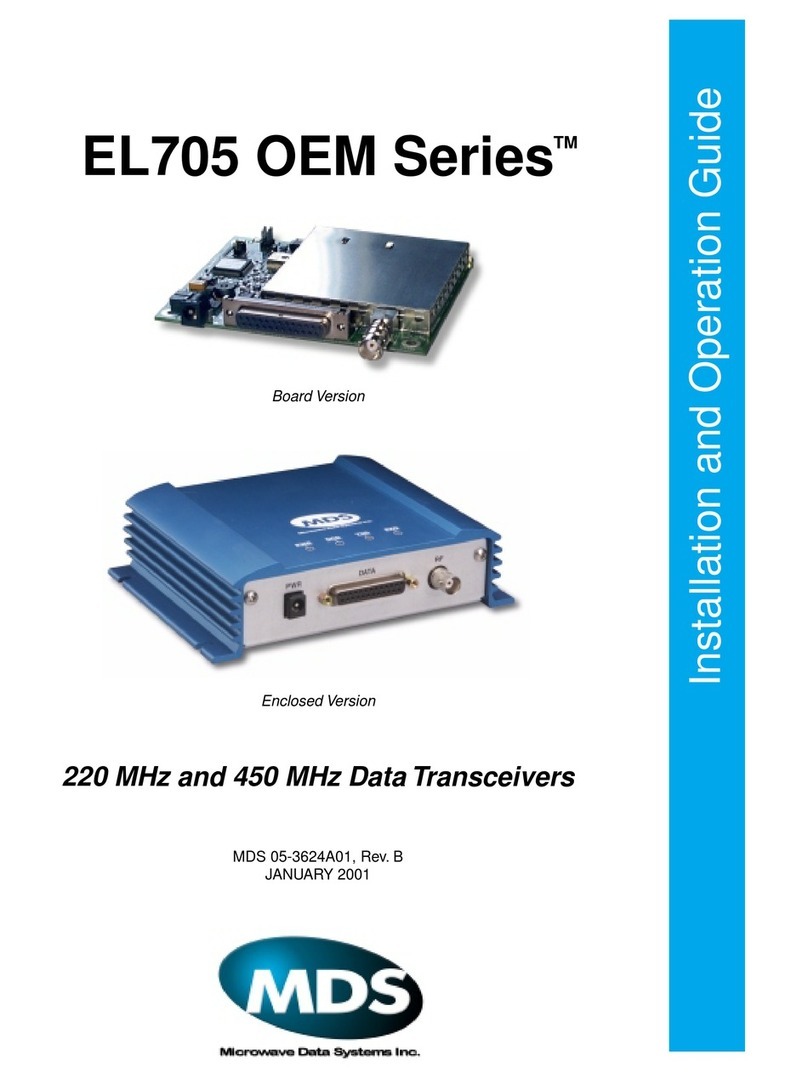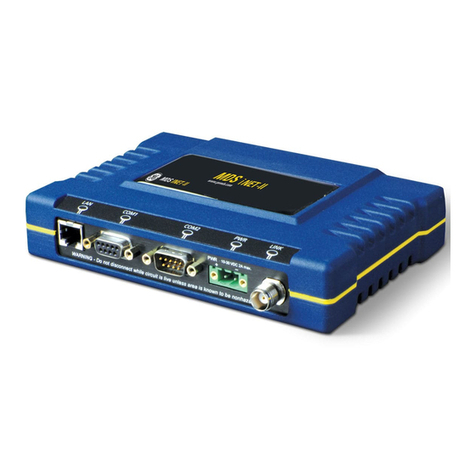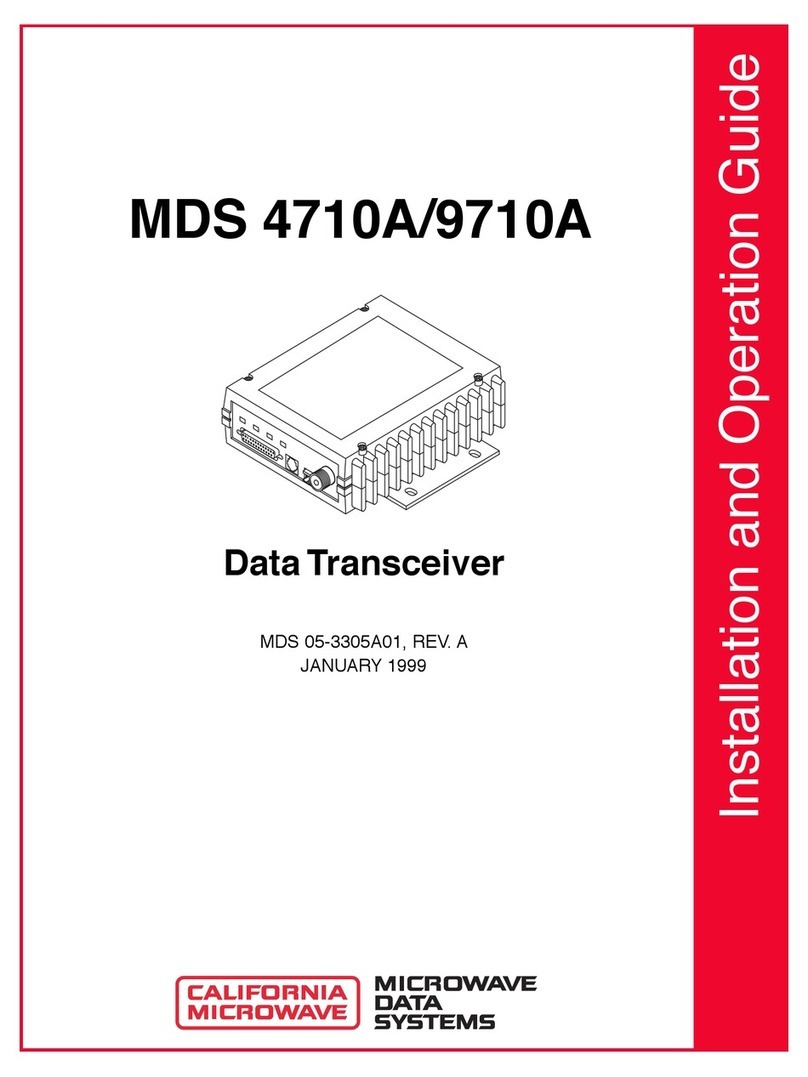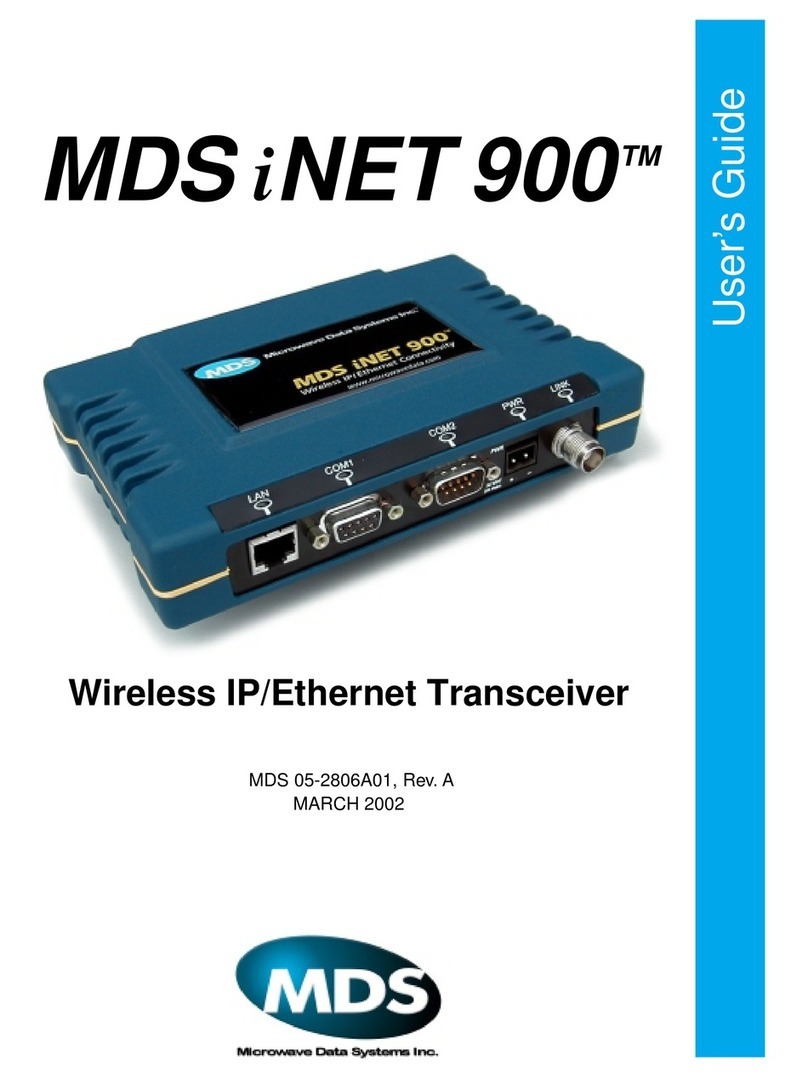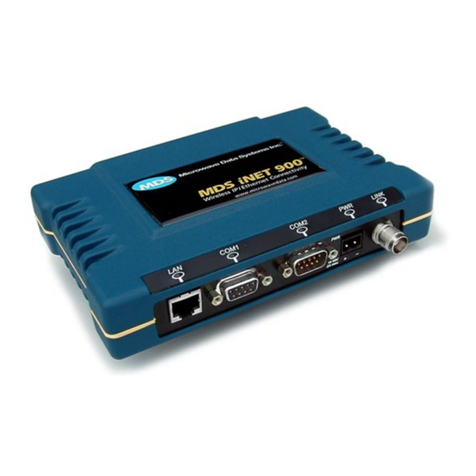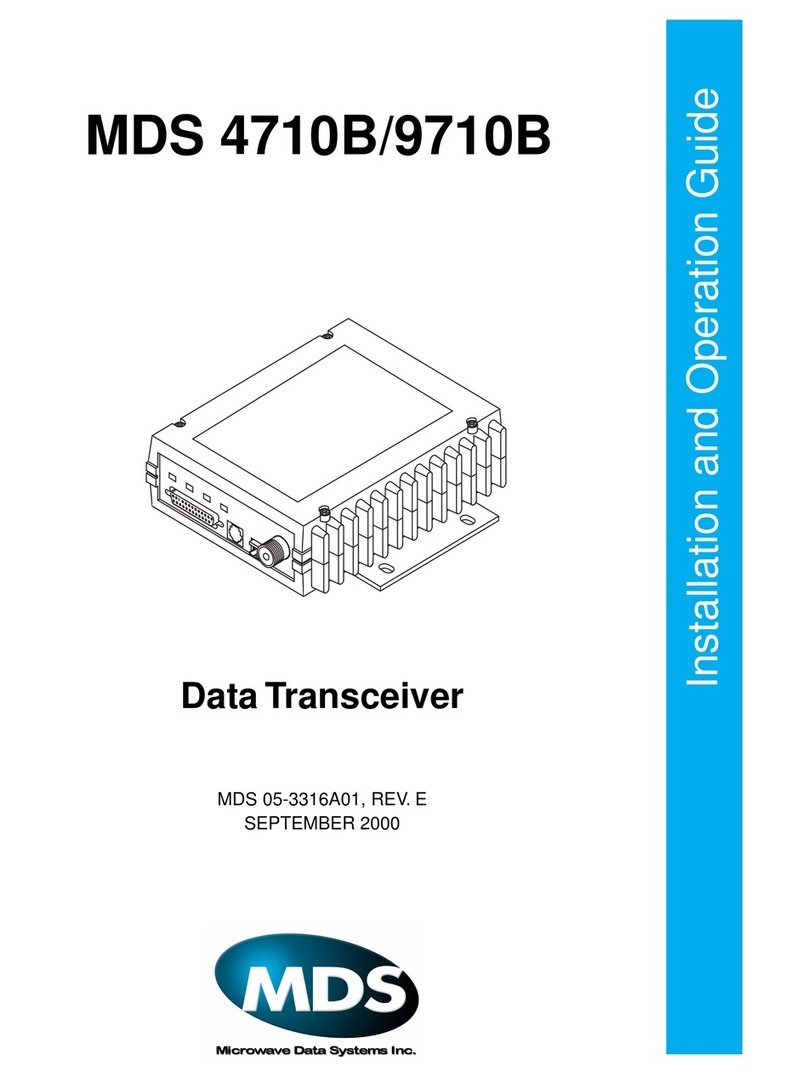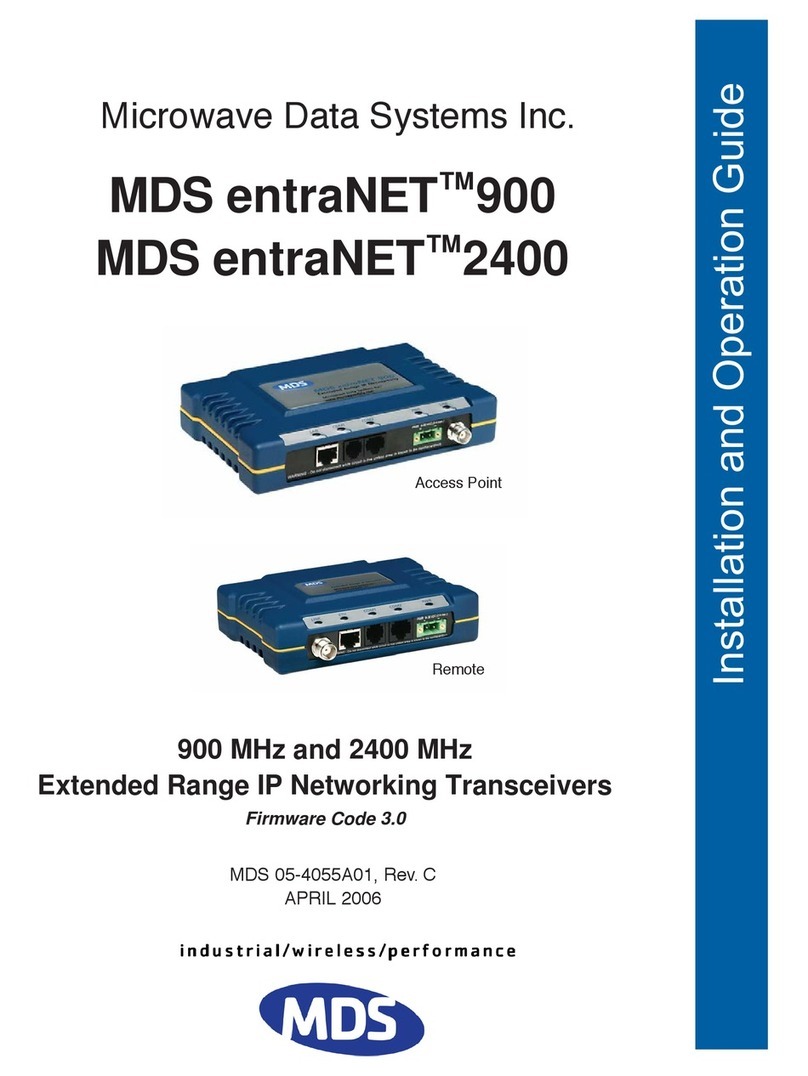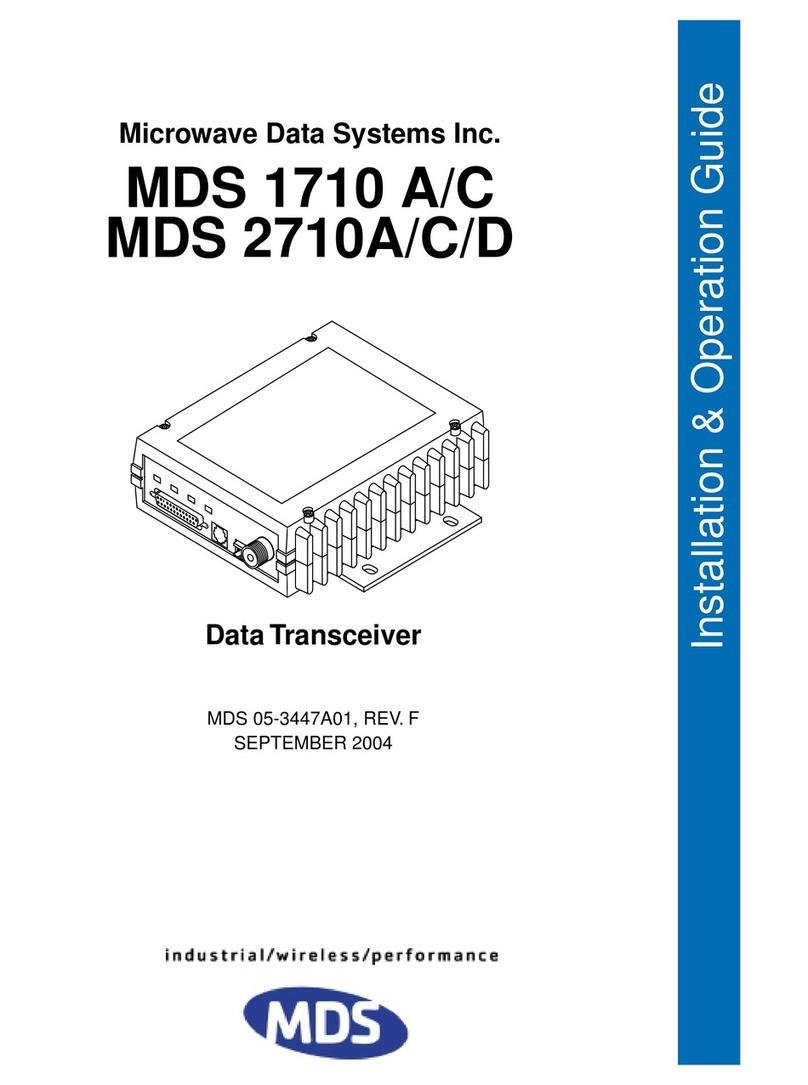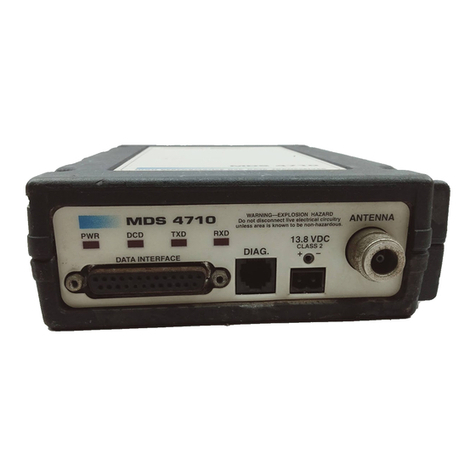
viii MDSTransNETI&O Guide MDS 05-2708A01, Rev. D
4. Installation, operation and maintenance of the transceiver should be in accordance with the
transceiver's installation manual, and the National Electrical Code.
5. Tampering or replacement with non-factory components may adversely affect the safe use of
the transceiver in hazardous locations, and may void the approval.
6. A power connector with screw-type retaining screws as supplied by MDS must be used.
When installed in a Class I, Div. 2, Groups A, B, C or D hazardous location, observe the fol-
lowing:
WARNING EXPLOSION HAZARD
Do not disconnect equipment unless power
has been switched off or the area is know to be non-hazardous.
Refer to Articles 500 through 502 of the National Electrical Code (NFPA 70) for further infor-
mation on hazardous locations and approved Division 2 wiring methods.
FCC Part 15 Approval Notice
The MDS TransNET 900™ (FCC ID: E5MDS-EL805) and MDS TransNET 2400™ trans-
ceivers (Pending FCC ID: E5MDS-EL805-24) comply with Part 15 of the FCC Rules. Operation
is subject to the following two conditions: (1) this device may not cause harmful interference,
and (2) this device must accept any interference received, including interference that may cause
undesired operation. This device is specifically designed to be used under Section 15.247 of the
FCC Rules and Regulations. Any unauthorized modification or changes to this device without
the express approval of Microwave Data Systems may void the user’s authority to operate this
device. Furthermore, this device is intended to be used only when installed in accordance with
the instructions outlined in this manual. Failure to comply with these instructions may also void
the user’s authority to operate this device.
Manual Revision and Accuracy
While every reasonable effort has been made to ensure the accuracy of this manual, product
improvements may result in minor differences between the manual and the product shipped to
you. If you have additional questions or need an exact specification for a product, please contact
our Customer Service Team using the information at the back of this guide. In addition, manual
updates can often be found on the MDS Web site at
www.microwavedata.com.
ESD Notice
To prevent malfunction or damage to this radio, which may be caused by Electro-
static Discharge (ESD), the radio should be properly grounded by connection to the
ground stud on the rear panel. In addition, the installer or operator should follow
proper ESD precautions, such as touching a grounded bare metal object to dissipate
body charge, prior to adjusting front panel controls or connecting or disconnecting
cables on the front or rear panels.
Environmental Information
The equipment that you purchased has required the extraction and use of natural
resources for its production. Improper disposal may contaminate the environment and
present a health risk due to hazardous substances contained within. To avoid dissem-
ination of these substances into our environment, and to diminish the demand on nat-
ural resources, we encourage you to use the appropriate recycling systems for disposal. These
systems will reuse or recycle most of the materials found in this equipment in a sound way.
Please contact MDS or your supplier for more information on the proper disposal of this equip-
ment.
